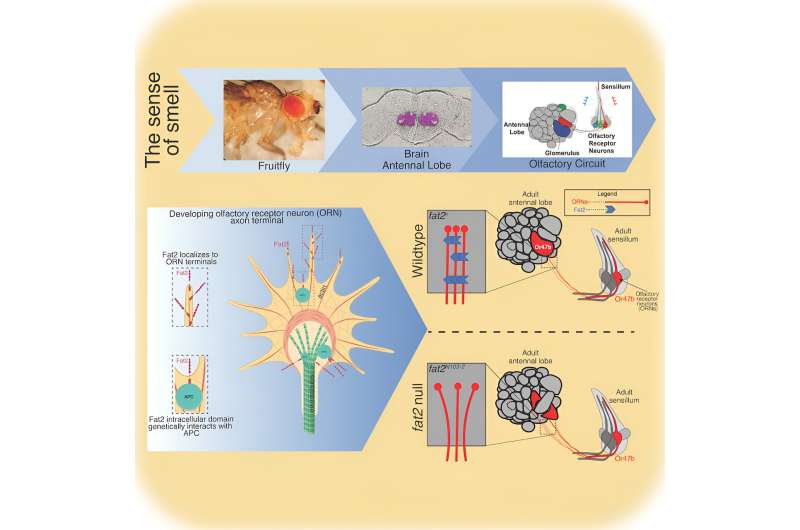This article has been reviewed according to Science X's editorial process and policies. Editors have highlighted the following attributes while ensuring the content's credibility:
fact-checked
peer-reviewed publication
trusted source
proofread
From tiny flies, researchers have found new clues to how the brain sets up its circuitry

In her time at Duke, Khanh Vien figures she's dissected close to 10,000 fly brains. For her Ph.D. she spent up to eight hours each day peering at baby flies under the microscope, teasing out tiny brains a fraction the size of a poppy seed.
"I find it very meditative," she said.
Vien acknowledges that, to most people, fruit flies are little more than a kitchen nuisance; something to swat away. But to researchers like her, they hold clues to how animal brains—including our own—are built.
While the human brain has some 86 billion neurons, a baby fruit fly's brain has a mere 3,016—making it millions of times simpler. Those neurons talk to each other via long wire-like extensions, called axons, that relay electrical and chemical signals from one cell to the next.
Vien and other researchers in Professor Pelin Volkan's lab at Duke are interested in how that wiring gets established during the fly's development.
By analyzing a subset of neurons responsible for the fly's sense of smell, the researchers have identified a protein that helps ensure that new neurons extend their axons to the correct spots in the olfactory area of the young fly's brain and not elsewhere.
Because the same protein is found across the animal kingdom, including humans, the researchers say the work could ultimately shed light on what goes awry within the brains of people living with schizophrenia and other mental illnesses.
Their findings are published in the journal iScience.
More information: Khanh M. Vien et al, Atypical cadherin, Fat2, regulates axon terminal organization in the developing Drosophila olfactory receptor neurons, iScience (2024). DOI: 10.1016/j.isci.2024.110340



















